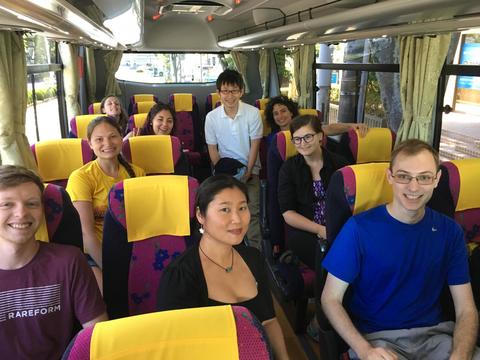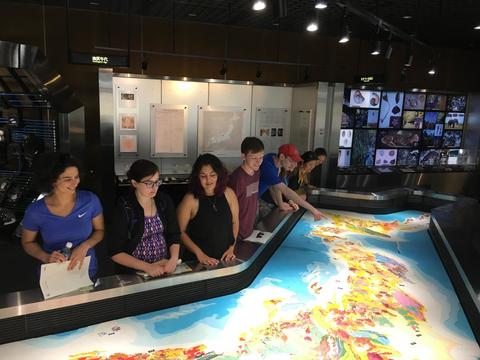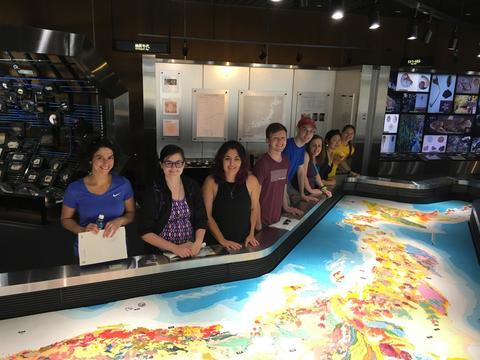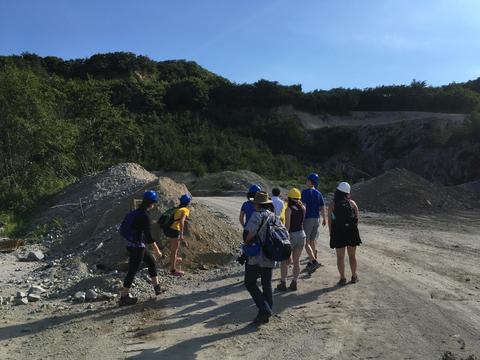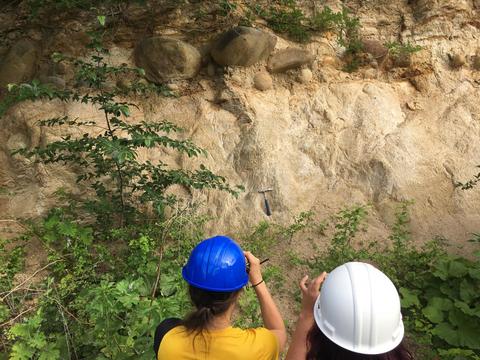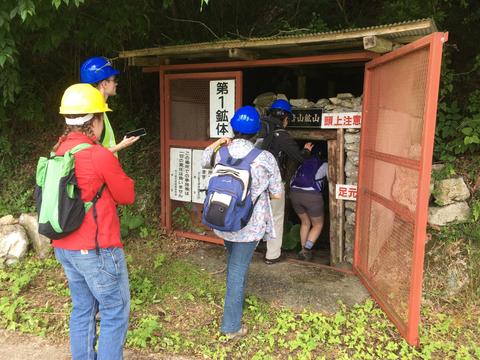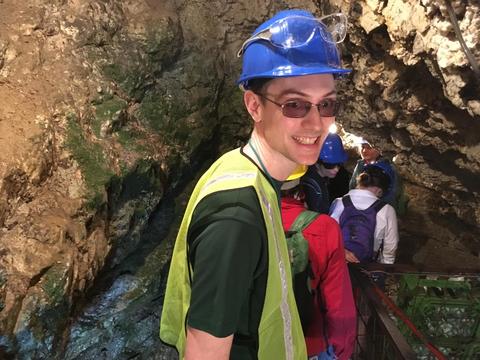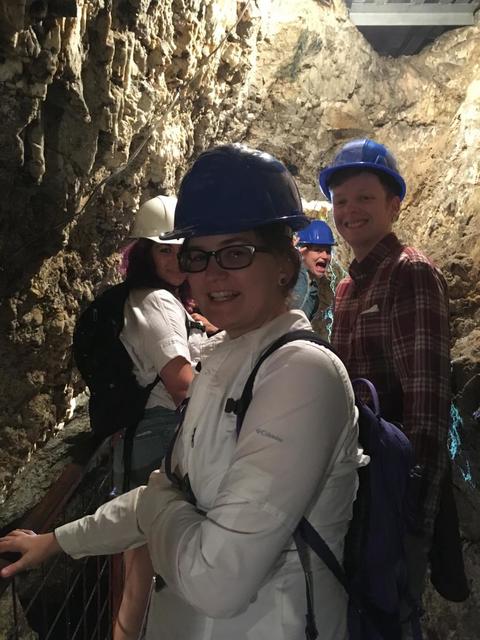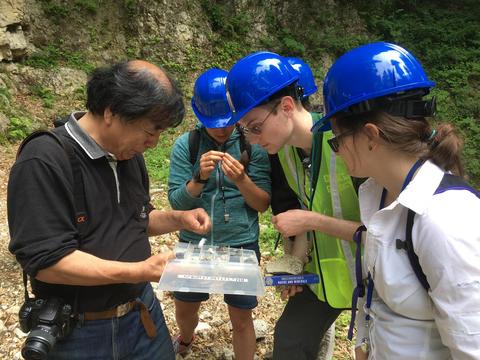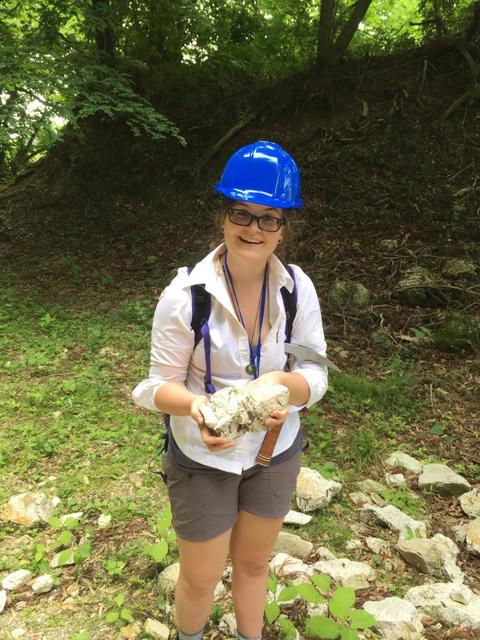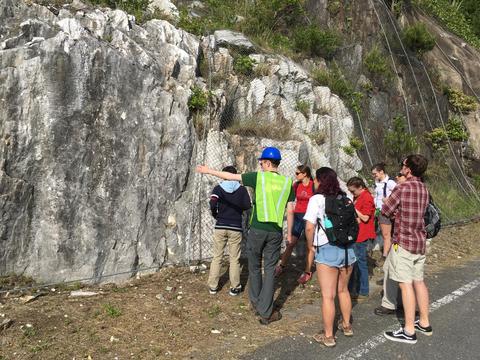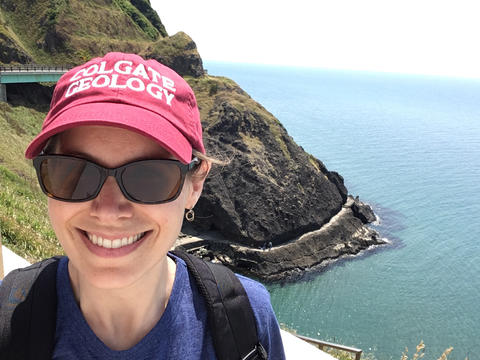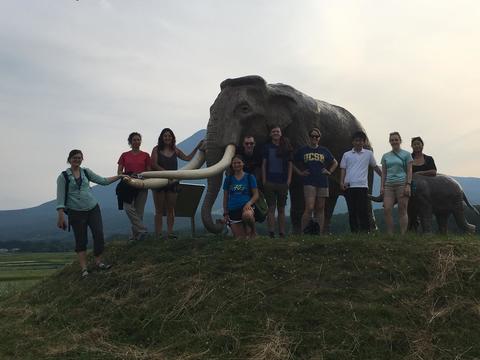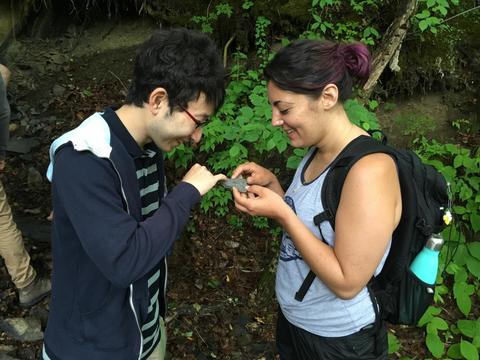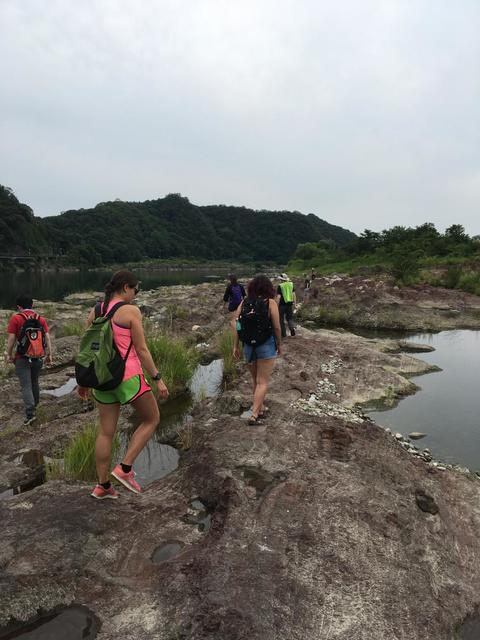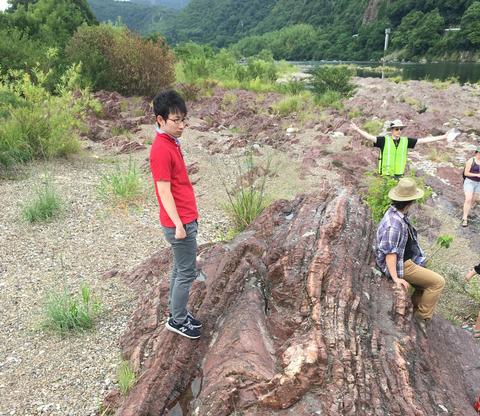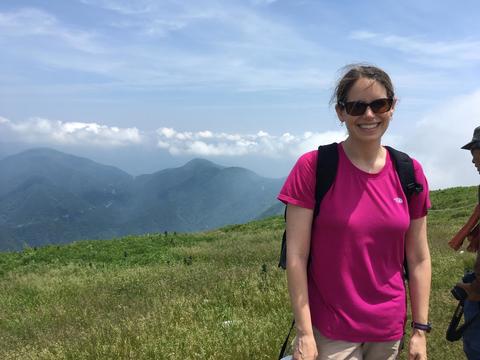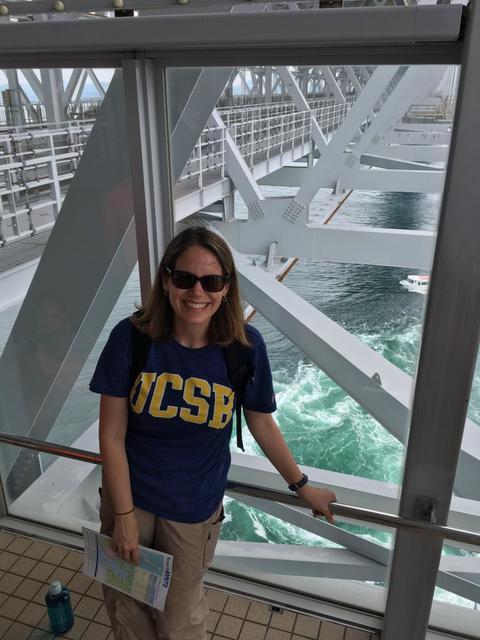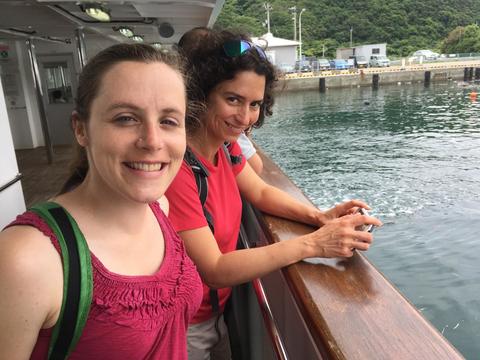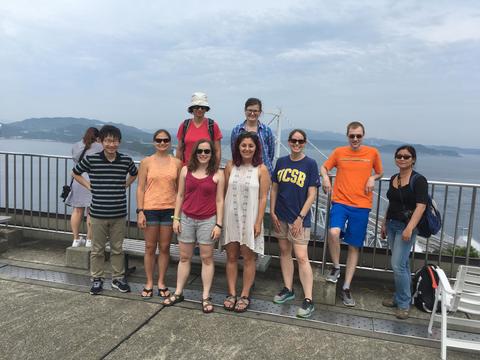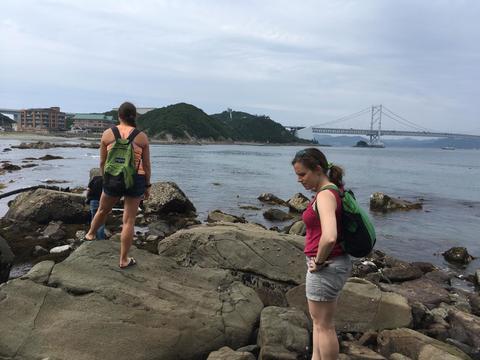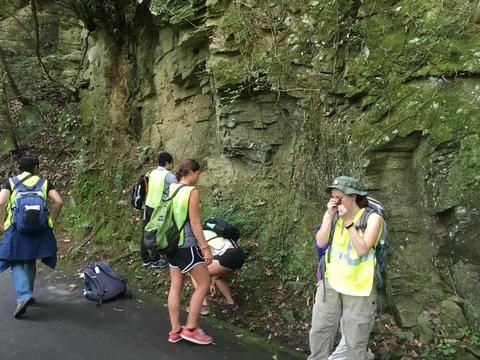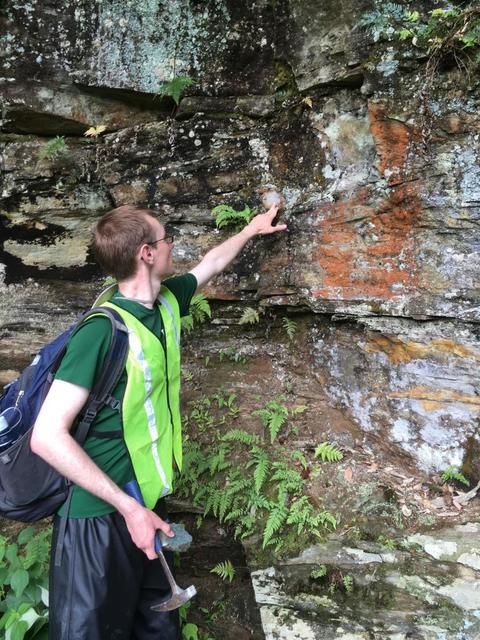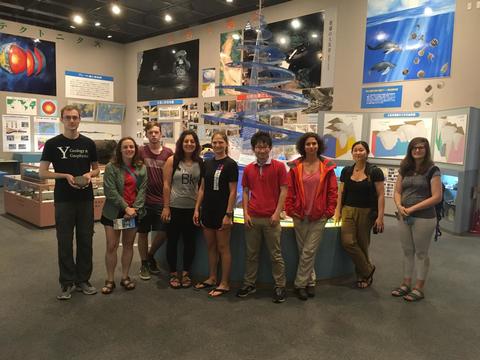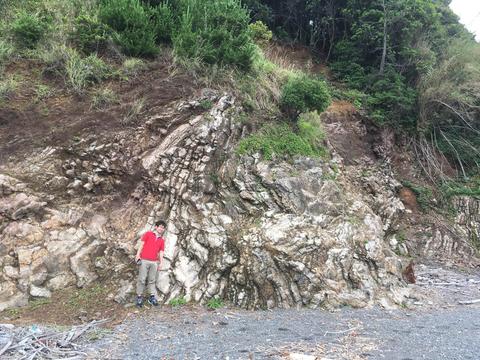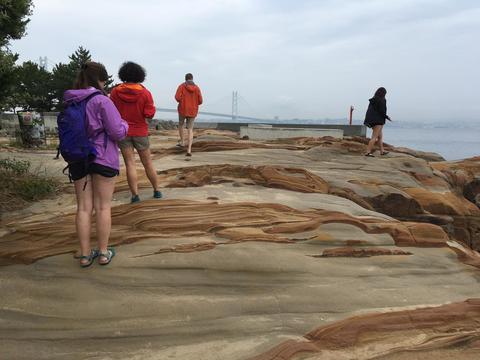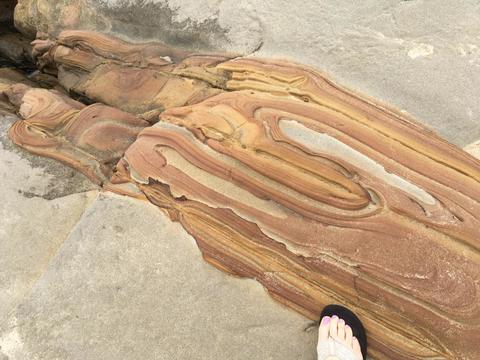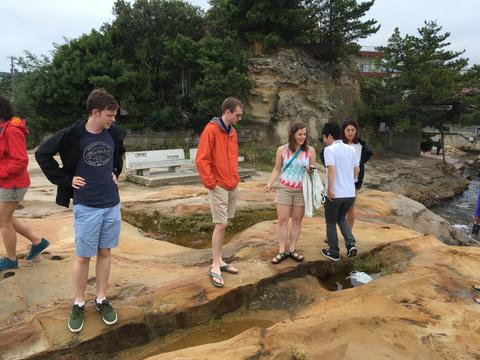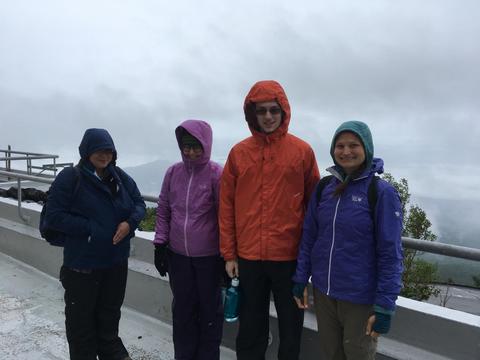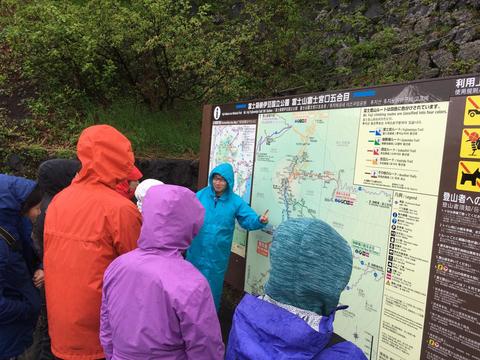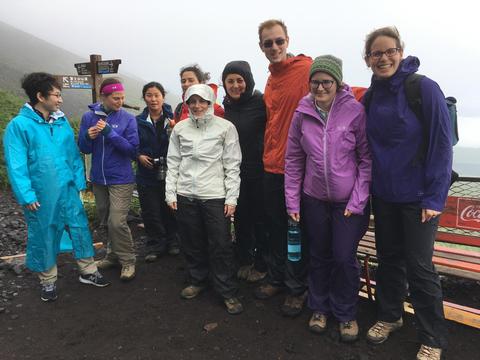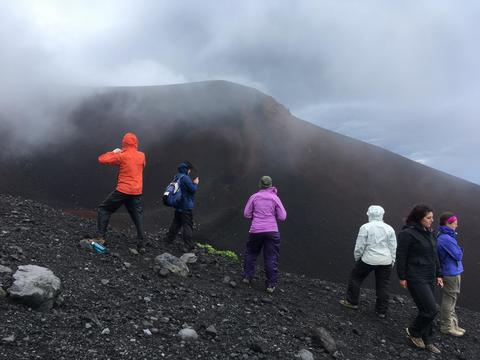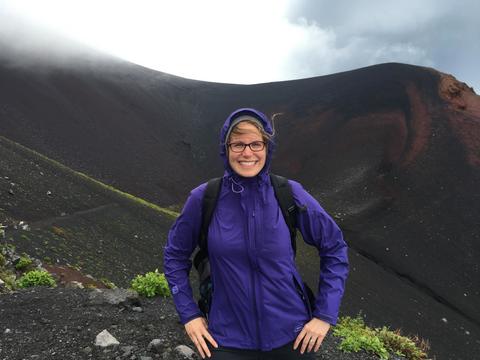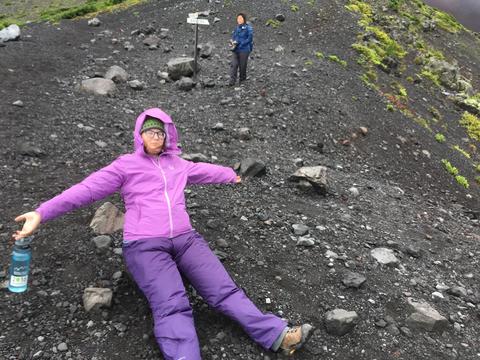In June 2017, a group of 12 G&G graduate students and faculty visited the geologic highlights of Japan, following up on the Spring 2017 “Regional Perspectives on Global Geoscience” seminar class. The trip was planned by G&G students Duncan Keller, Katelyn Gray, and Yoshi Miyazaki, and the faculty leaders for the trip were Maureen Long and Noah Planavsky. Our two-week adventure ranged across the islands of Honshu, Awaji, and Shikoku and covered a huge range of geologic, geophysical, oceanographic, and climatological features. Highlights included visits to several geologic and fossil museums, a day exploring the Sendai Plain to see features from the 2011 great earthquake and tsunami, a stop to see a Ryoke Belt pegmatite that featured meter-long tourmaline crystals, a view of a spectacular pyroclastic flow deposit on the Sea of Japan, a visit to the youngest exposed granodiorite pluton on Earth, a stop to see an exposure of the Median Tectonic Line, an exploration of the famous Kiso River bedded cherts, a museum stop that featured a preserved 5 meter fault offset from the 1891 Nobi earthquake, a hike up Mount Ibuki, which has some of the heaviest orographic precipitation on Earth, a boat trip to see the Naruto Whirlpools up close, a hike to see blueschists and eclogites of the Sanbagawa Belt, and a hike to Hoei Crater on Mount Fuji. We had a day off for sightseeing in Kyoto and even felt an earthquake (well, some of us did) - a shallow magnitude 5.2 in Nagano Prefecture.
